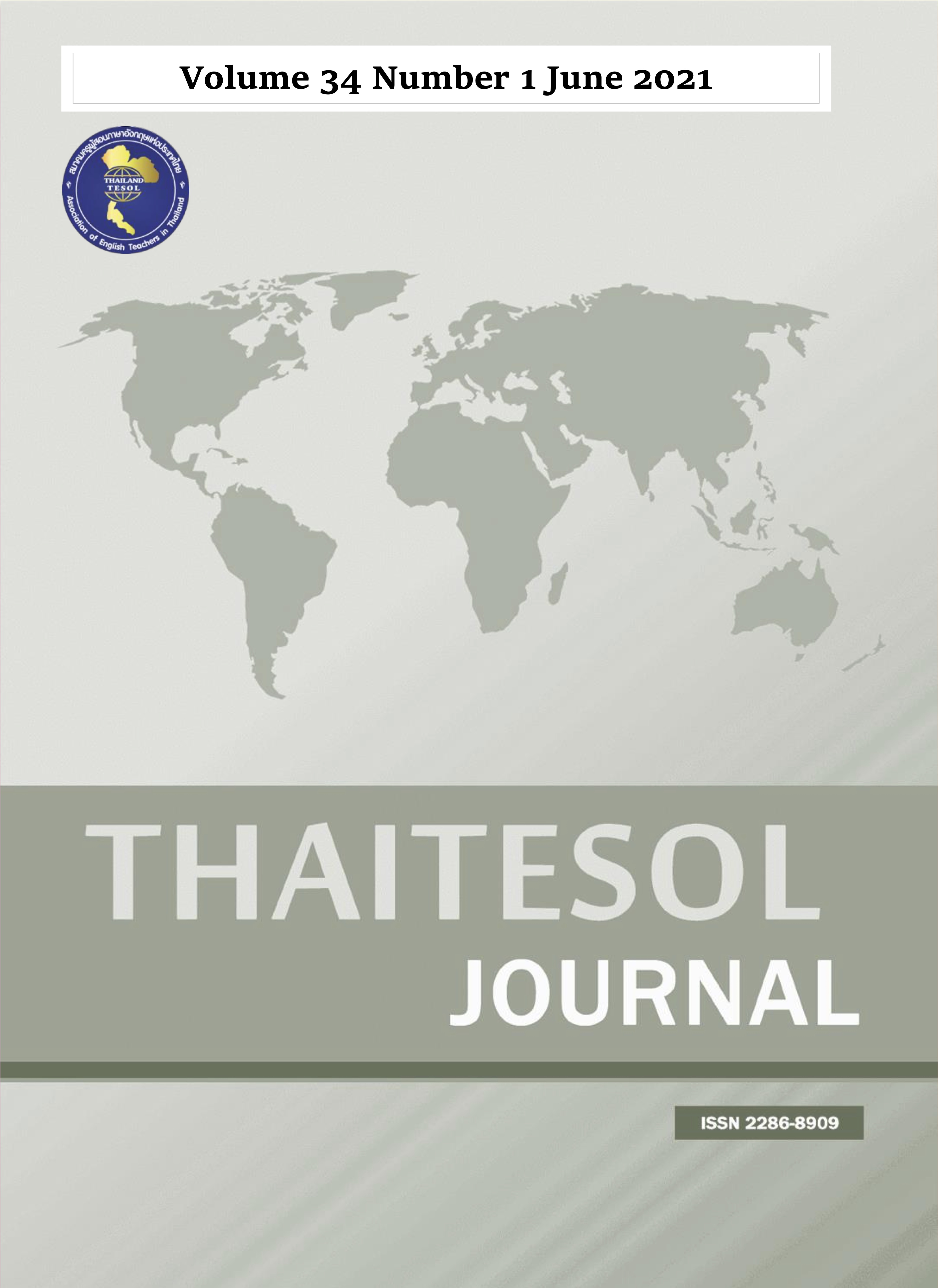Investigating Thai EFL Undergraduates’ Oral Presentation Performances and Experiences, Using Teacher and Student Self-Assessments
Main Article Content
Abstract
This study aimed to 1) measure and identify students’ strengths and weaknesses in oral presentation skills, 2) examine students’ perceptions of rating their presentation performances, and 3) investigate students’ attitudes towards their oral presentation experiences. The participants were 47 Thai third-year undergraduate students in the English for International Communication Program. Research instruments were the teacher assessment form and a student self-assessment questionnaire, including a scoring rubric and self-reflection questions. Means, standard deviations, and Paired Sample T-Test were used to analyze oral presentation performance levels from self- and teacher assessments. Coding and categorizing were also used to analyze responses from self-reflection questions. As a result, the overall level of oral presentation performance was at a high level. Based on the teacher assessment, students’ most outstanding performance was expressing an in-depth understanding of the topics and creative and professional design of visual aids. Dealing with questions was the least outstanding performance but remained at the high level. Regarding the students' self-assessment, they appeared to be most confident in expressing an in-depth understanding of the topics that was ranked at a high level. However, pronunciation, vocabulary, and grammar were ranked at the medium level. In addition, students’ reflection revealed students’ positive attitudes towards their presentation experiences, showing their efforts to practice and prepare the presentation, solve problems related to setting and environment, affective factors, and working memory while delivering presentations. This study suggested that regular training and practice of self-assessment rubric and self-reflection would complement teacher assessments to improve students' oral presentation and continuously promote life-long learning.
Article Details
Materials in THAITESOL JOURNAL may be photocopied for educational purposes. Under no circumstances may any part of this journal be photocopied for commercial purposes.


